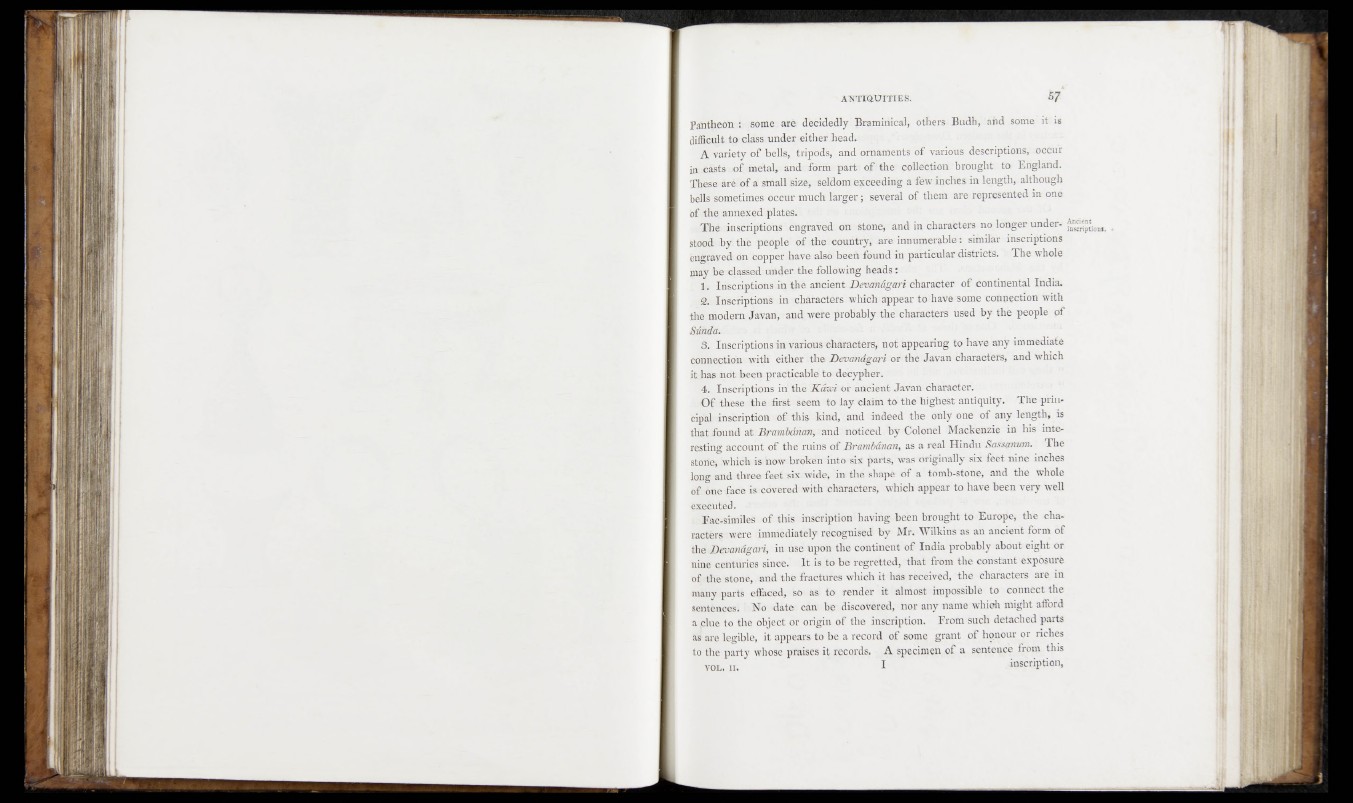
AMrratriTiEs. 67
Pantheon : some are decidedly Braminical, others Budh, and some it is
^flfienjfc to-idass. under either headi
A variety of bells, tripods, and ornaments of various descriptions, occur
in casts of metal, and form part of the collection brought to England.
These, are. of a small Size» seldom, exceeding a few inches in length, although
bells sometimes occur much larger; several of them are represented in one
bf the annexed' platés. r
. Thé-: inscriptions engraved on’ stone, and in characters no- longer under- :
Stood, hyi the people' óf the country, are innumerable: similar inscriptions
èngraved ón hopper have also been found in particular districts. The whole
pay be classed under the following heads:
ïk Inscriptions in the ancient Devanagari character of continental India.
&\ThScHptionb in characters which appear to have some connection with
the modern Javan, and were probably the characters used by the people pf
Sunda.
3 . Inscriptions'«! various characters, not appearing to have any immediate
connection with either .the Deoandgari or the Javan characters, and which
it. has not been practicable to decypher.;
4. Inscriptions iri the Kami or ancient Javan character.
Of these the ifirst seem to lay claim to the highest antiquity. The principal
inscription of this kind, and indeed the only one of any length, is
that found at and noticed by Colonel Mackenzie in his interesting
account of the ruins of Brambdnan, as a real Hindu Sassanum. The
storiej 'which is now broken into six parts, was originally six feet nine inches
long and three feet six wide, in the shape of a tomb-stone, and the whole
óf;.óne facè is covered -with characters, which appear to have been very "well
executes®. •" 1 ' :’t; ' ■4 1
I Eac-similes of this inscription having been brought to Europe, the characters
were immediately recognised by Mr. Wilkins as an ancient form of
Deoandgari, in use upon the continent of India probably about eight or
nine cehturies since. It is to be regretted, that from the constant exposure
of .-the stone, and the fractures which it has received, the characters are in
many parts eflaced, so as to render it almost impossible to connect the
sentences. No date can be discovered, nor any name whieh might afford
a clue to the object or origin of the inscription. Erom such detached parts
és are legible, it appears to be a record of some grant of honour or riches
to the party whose praises it records, A specimen of a sentence from this
von. n. I inscription,